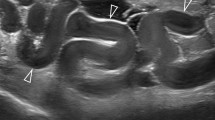Abstract:
Location of the bladder neck and its dynamic motion are believed to be influenced by body position. This study was designed to evaluate factors affecting bladder neck mobility in both supine and standing positions. The parameters of 75 GSI patients and 49 controls were compared by Student’s t-test. Receiver operating characteristic curves and multiple logistic regression analysis were used to analyze the effects of potential contributing factors on bladder neck mobility. We were unable to find any significant correlation between bladder neck hypermobility and GSI. We also failed to demonstrate that bladder neck hypermobility in the supine or standing position relative to previous believed risk factors, including parity, vaginal delivery, menopause, cystocele, rectocele, uterine prolapse or body mass index. In order to elucidate the pathophysiology of bladder neck mobility clearly, changes in intra-abdominal pressure and gravitational direction in different positions should be evaluated carefully and scientifically in further studies.
Similar content being viewed by others
Author information
Authors and Affiliations
Additional information
Rights and permissions
About this article
Cite this article
Lin, LY., Chen, SY., Lee, HS. et al. Female Bladder Neck Changes with Position. Int Urogynecol J 10, 277–282 (1999). https://doi.org/10.1007/s001929970002
Issue Date:
DOI: https://doi.org/10.1007/s001929970002




